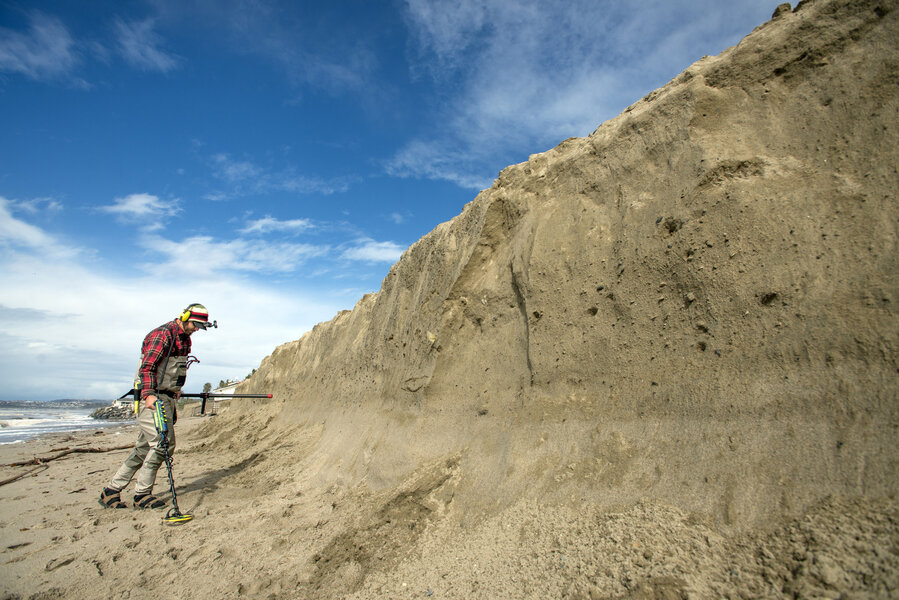Why California's eroding coast is a problem – and what the government can do
Last winter’s El Niño storms ate away an unprecedented amount of the West Coast’s beaches – which might provide a glimpse of the future.
A new study published this week in the journal Nature Communications finds that unusually powerful waves during the 2015-2016 El Niño season, combined with a lack of new sediment flushed down onto beaches, thanks to drought-starved coastal rivers, eroded 76 percent more sand than normal from 29 beaches in California, Washington, and Oregon.
"It looks like climate change will bring us more El Niño events, possibly twice as many, at twice the frequency as in the past," said David Hubbard, a co-author of the study and a University of California Santa Barbara marine ecologist, in a statement. "So this is a taste of what's coming."
Waves generated by storms across the North Pacific, added Patrick Barnard, a lead author and coastal scientist with the US Geological Survey, were "among the largest ever recorded."
"Further, the lack of rainfall means the coastal rivers produced very little sand to fill in what was lost from the beaches, so recovery has been slow," he said in a statement.
The study shines a light on one of the few environmental issues to earn bipartisan agreement in Congress: the need to protect the nation's eroding coastlines. Scientists expect that erosion, a normal process, will get worse as sea levels rise and climate change makes extreme weather events more extreme.
In the closing weeks of the Obama administration, Congress passed the Water Infrastructure Improvements for the Nation Act, which directed the US Army Corps of Engineers to start 10 pilot projects through which sediment dredged up as part of other Army Corps activities would be used to restore and protect coastlines.
The agency finalizes its list of pilot cities this spring, and places like San Francisco, which lost 180 feet of sand on its Ocean Beach, are vying for a slot.
“Nobody opposes this,” Larry Goldzband, the executive director of the San Francisco Bay Conservation and Development Commission, told the AP.
“Everybody wants beneficial reuse. The question is, how can it get done in a way that fits within budgets?”
Not every Pacific Coast beach suffered equally during the period studied. Relatively mild waves in the Pacific Northwest, and beach-augmentation programs that added sand to Southern California coastlines, helped stabilize some of them.
But it isn’t just sandy beaches and the organisms that live on them that are affected by rising seas and El Niño events: marshes and other coastal ecosystems need a steady supply of sediment to keep from disappearing.
"First we need to understand the challenges, and those include the rising sea level and the fact that most of the problems occur during these peak El Niño events," Dr. Hubbard said in the study's press release. "Then we need to restore or manage our coasts in ways that will enable us to deal with these events and conserve beach ecosystems. I think that's the challenge that we as a society have to address."
This report contains material from the Associated Press.







